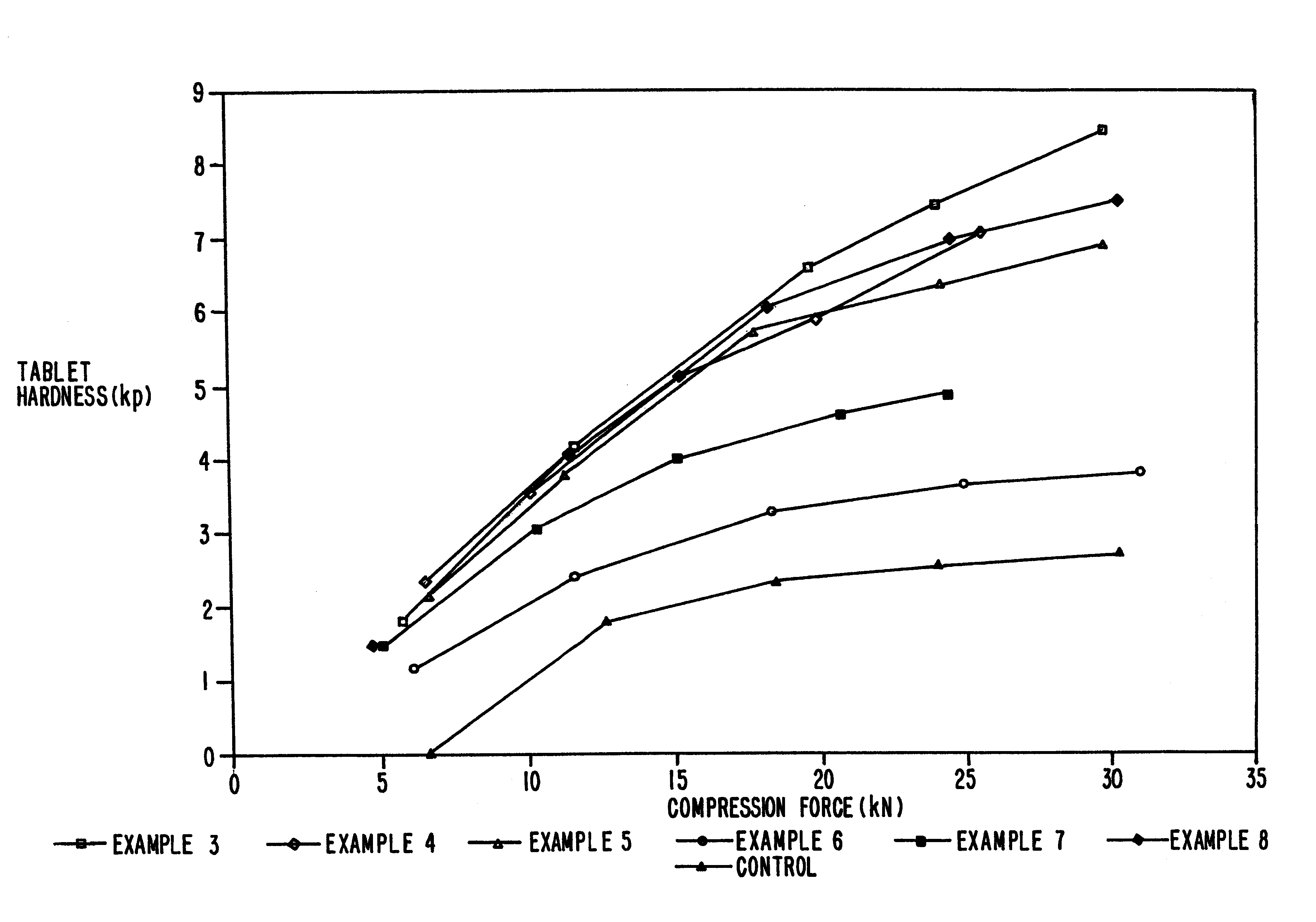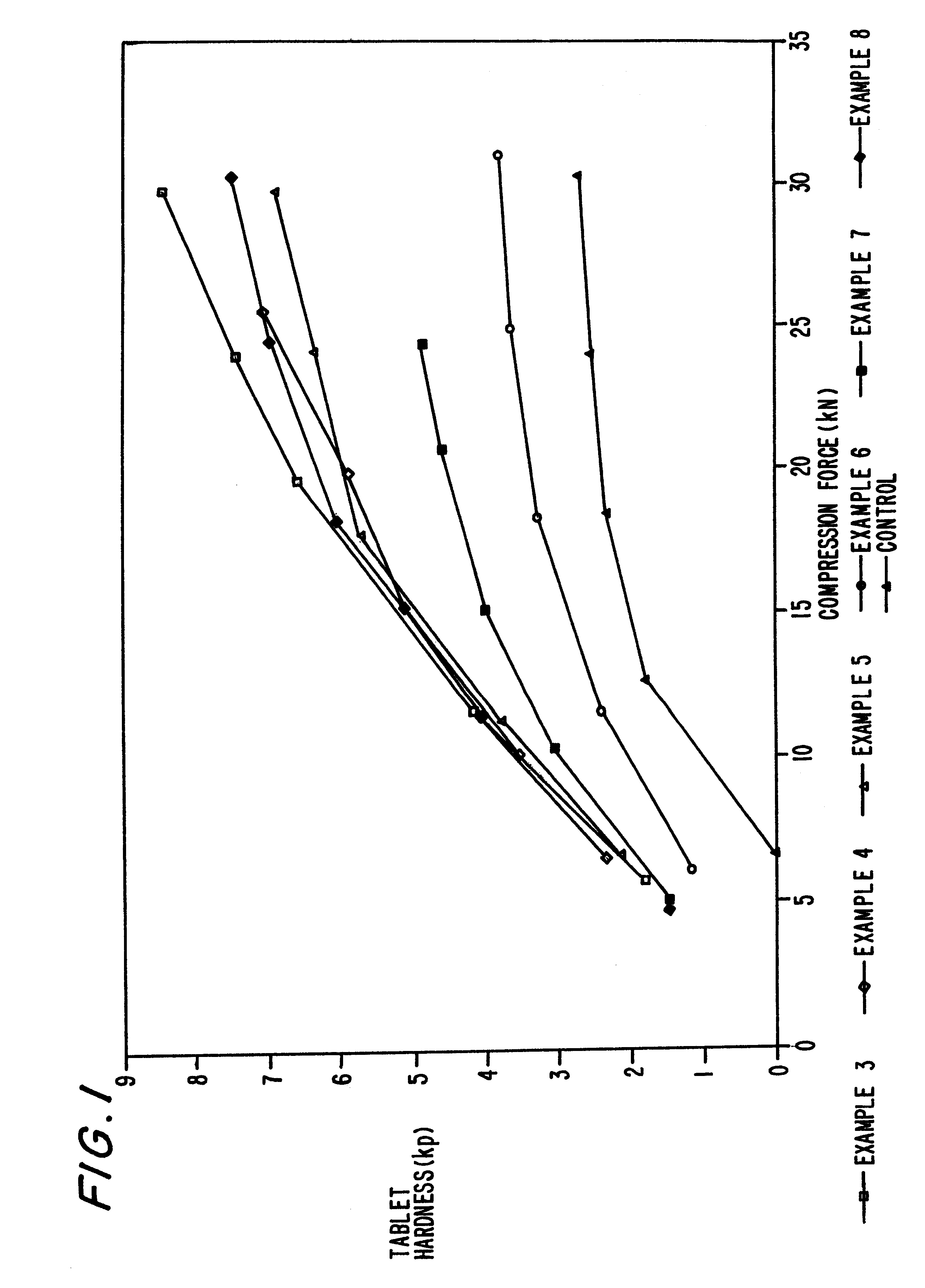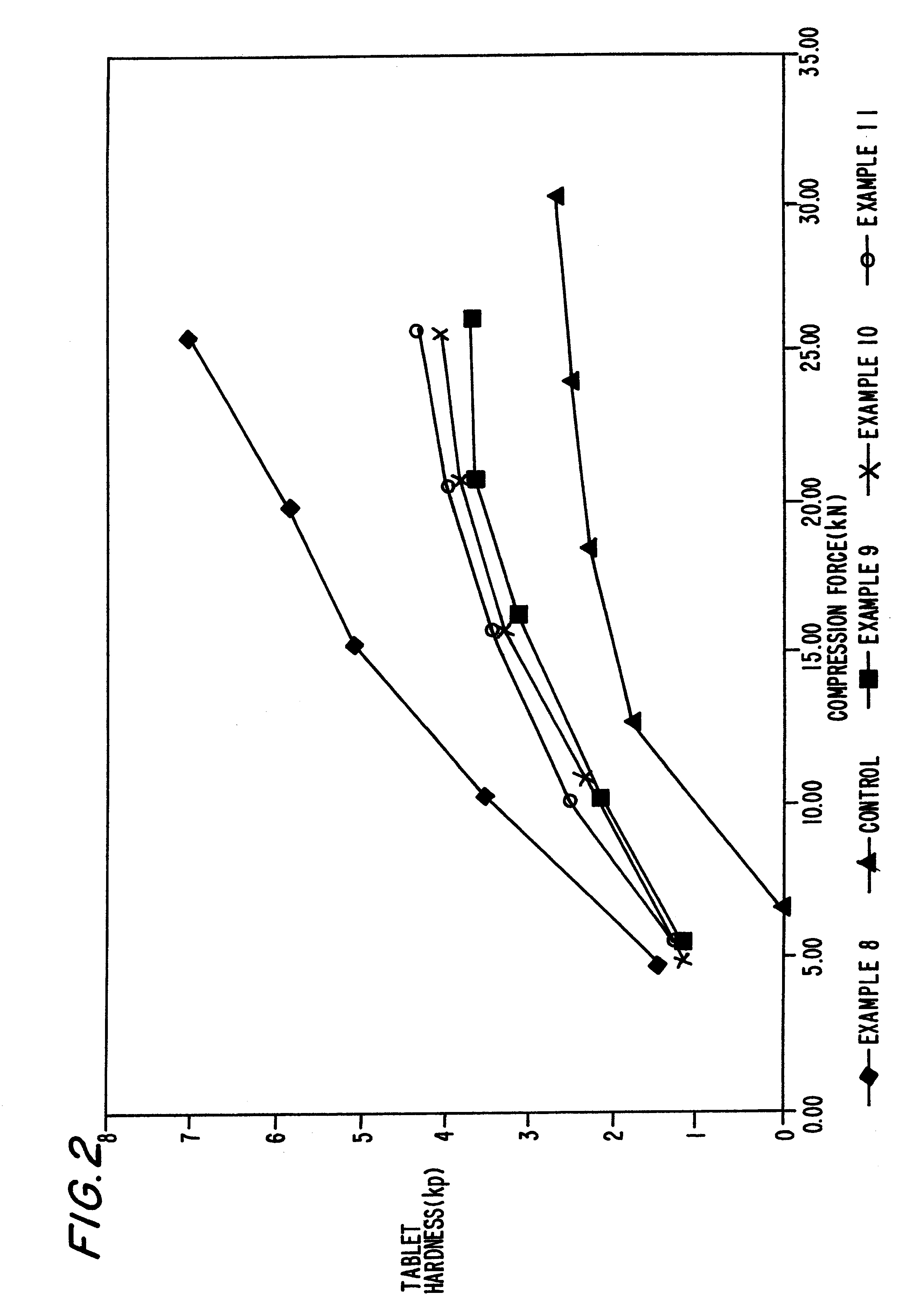Directly compressible high load acetaminophen formulations
- Summary
- Abstract
- Description
- Claims
- Application Information
AI Technical Summary
Benefits of technology
Problems solved by technology
Method used
Image
Examples
example 1
MCC-SiO.sub.2 Product--5% w / w SiO.sub.2
In this example, about 6.2 kilograms of microcrystalline cellulose (MCC), (Mendell Co., Inc. Patterson, N.Y.) in the form of a wet cake was combined with 5.2 kilograms of water in a mix tank to form a slurry containing about 15% solids. The pH was adjusted to about neutral with about 3 ml of ammonium hydroxide. The slurry was allowed to mix for about 15 minutes before being combined with 5% w / w colloidal silicon dioxide (CSD), 200 m.sup.2 / g (CaboSil, PTG grade, available from Cabot Corp., Tuscola, Ill.) After allowing the materials to become intimately combined, the slurry was spray dried using a Niro Production Minor (Niro, Columbia, Md.), inlet temperature -215.degree. C., outlet temperature-125.degree. C., atomizer wheel speed 22,300 rpm, to provide MCC-SiO.sub.2 having an average particle size of 40-60 microns.
example 2
MCC-SiO.sub.2 Product--2% w / w SiO.sub.2
In this example, the process of Example 1 was repeated except that 2% w / w colloidal silicon dioxide was used to form the product.
examples 3-11
In these examples, batches of compressed tablets containing granular acetaminophen (APAP) in high load (80% wt.) were prepared using the techniques described herein and compared to a high load (80% by weight) APAP formulation described above wherein all ingredients were V-blended before being compressed into tablets.
In each case, the tablets were prepared using a Korsch tablet press having a punch size of 3 / 8" and an aim weight of about 245 mg.+-.5 mg. Each of the foregoing granulations was included in five separate tableting runs using compression forces of 6, 12, 18, 24 and 30 kN, respectively. Ten tablets from each run were weighed, measured for diameter and tested for thickness and hardness on the Erweka TBH 30 tablet hardness tester to determine tensile strength of the final product. The results of the analyses are graphically illustrated in FIGS. 1-2 as a comparison of tensile strength versus compression force.
The batch formula for the comparative control tablets is set forth ...
PUM
| Property | Measurement | Unit |
|---|---|---|
| Fraction | aaaaa | aaaaa |
| Fraction | aaaaa | aaaaa |
| Fraction | aaaaa | aaaaa |
Abstract
Description
Claims
Application Information
 Login to View More
Login to View More - R&D
- Intellectual Property
- Life Sciences
- Materials
- Tech Scout
- Unparalleled Data Quality
- Higher Quality Content
- 60% Fewer Hallucinations
Browse by: Latest US Patents, China's latest patents, Technical Efficacy Thesaurus, Application Domain, Technology Topic, Popular Technical Reports.
© 2025 PatSnap. All rights reserved.Legal|Privacy policy|Modern Slavery Act Transparency Statement|Sitemap|About US| Contact US: help@patsnap.com



